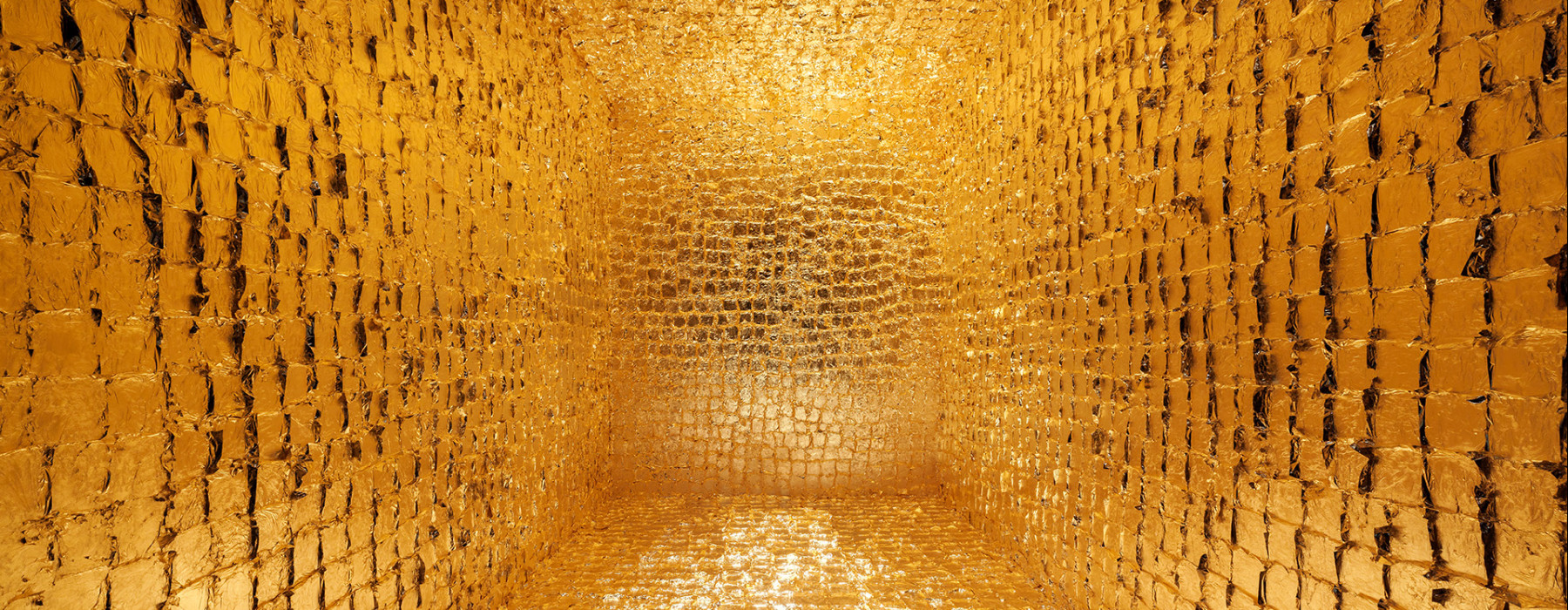
1. Chairs
Gold leaf, wood, rattan; Bali, Indonesia; early 20th century; gift of M. Nijhoff; RV-2582-1,-2
These two lavishly decorated gold chairs may come from the palace of Klungkung, the highest-ranking principality on the island of Bali.
2. Portfolio containing drawings of parasols (behind the golden chair)
Paper, ink, gold leaf highlights; Java, Indonesia; before 1920; RV-03-474
Portfolio containing 156 images of payung (in eleven sections) plus a three-part sheet describing the sections. The captions and preface are in Javanese.
3. Parasol, payung
Bamboo, paper; Java, Indonesia; before 1891; purchased from Montagne; RV-836-1
4. Parasol, payung
Bamboo, paper; Java, Indonesia; before 1878; gift of the Paris World’s Fair; RV-300-284N*
5. Princess Beatrix’s rattle
Gold, diamond; Deli, Indonesia; c. 1937; courtesy of the Royal Collections, The Hague
This gold rattle is in the shape of an official parasol used at ceremonies, the payung. There are bells on each layer, and a tiny crown set with diamonds sits on the top.
6. Polichinelle rattle with teething ring
Silver-gilt, blood coral; Paris, France; c. 1838; courtesy of Keijser collection
7. George III rattle with whistle and teething ring
Made by John Linnit; gold, blood coral; London, United Kingdom; 1833; courtesy of Keijser collection
The full names of both the child and the giver appear on this rattle. ‘William Forbes from his grandmother Agnes Forbes’ is engraved on the mouth of the whistle.
8. Rococo rattle with whistle and teething ring
Gold, rhinestone; Rotterdam, Netherlands; 1747; courtesy of Keijser collection
9. Sea creature rattle with teething stick
Gold, yellow crystal; Spain; c. 1750; courtesy of Keijser collection
10. Photograph of the Sultan of Kutai
A.W. Nieuwenhuys; photograph, paper, card; Borneo, Indonesia; 1896-1897; gift of A.W. Nieuwenhuis; RV-A9-13
The Sultan of Kutai poses for the Dutch photographer in full regalia here, wearing a magnificent gold crown. The ketopong, as the sultan’s crown is known, is made of solid gold and decorated with precious stones. It was made in the mid-19th century and was last used at the coronation of Sultan H.A.M. Salehuddin II of Kutai. The crown, weighing two kilos, is now kept at the National Museum in Jakarta.
11. Breast ornament featuring two crocodiles
Gold; Coclé, Panama; AD 800-1200; courtesy of MAS - Museum aan de Stroom
This breast ornament underlines the power of a prominent person. Crocodiles are amphibians. Shamans identify with crocodiles, which can exist in the worlds of land and of water. The heads of these crocodiles have a ‘tongue’ in the form of a stylised snake or mythical creature. Snakes symbolise the relationship between two worlds, and also represent fertility and eternity. The reverse of the ornament follows the curve of the whale’s teeth. Curving animal teeth of this kind were highly valued.